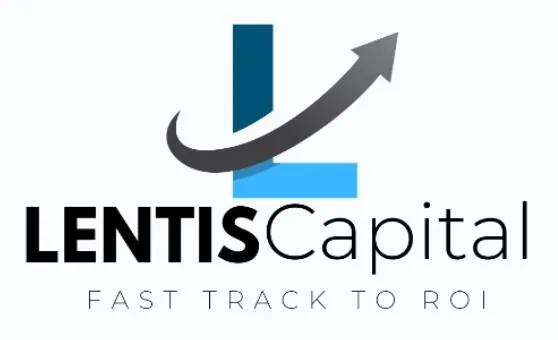BLOGS

Landlord Burnout Is Real—Here’s How to Reposition Your Portfolio for Peace and Profit
If you’ve ever hesitated to check your phone because you’re afraid there’s another late-night maintenance text waiting, or you’ve walked into a unit thinking, “Please let this be a quick fix,” you’re not alone.
Landlord burnout is real. I’ve seen it. I’ve lived it. And I’ve helped dozens of people navigate their way out of it—not by quitting real estate, but by repositioning their portfolios in a way that works for them instead of draining the life out of them.
Early in my career, I managed a team of over 60 real estate agents and oversaw more than $250,000 a month in rental income. From the outside, it looked like a well-oiled machine. But behind the scenes, I saw the same thing happen to landlords over and over again: the excitement of property ownership would slowly give way to stress, fatigue, and resentment.
They weren’t bad landlords. They were overwhelmed, stretched thin, and stuck with portfolios that were built without a long-term strategy.
Maybe this sounds familiar.
You bought a property because it was a “deal.” You took over a fourplex that looked great on paper but never quite performed. You managed repairs yourself to save money, but now every tenant call feels like a personal attack. You meant to build a passive income machine—but instead, you’ve built another job.
I get it. I’ve been there. But here’s the good news: burnout doesn’t mean you need to sell everything and walk away. Sometimes, all it takes is a few strategic moves to turn chaos into clarity—and stress into stability.
First, let’s talk about the signs of burnout.
You may be experiencing burnout if:
You dread tenant communication and avoid dealing with issues until they explode.
You haven’t raised rents in years because you’re worried about turnover.
You’ve put off repairs or upgrades because you’re out of energy, not money.
You’ve caught yourself saying, “If I could just break even and get out, I would.”
Sound familiar?
The truth is, many of these issues come from holding the wrong properties—or managing the right ones the wrong way. And the longer you hold onto a misaligned portfolio, the more exhausted you’ll become.
But there’s a way out. And it doesn’t require walking away from real estate. It requires repositioning.
Here’s how I’ve helped landlords transition from burnout to peace and profit—without starting over.
1. Audit Your Portfolio, Ruthlessly
Look at every property as if you were analyzing it for a client. Is it underperforming because of market conditions—or because of how it’s being managed? Are rents below market? Is the tenant quality poor? Is the property draining your time with constant repairs?
Sometimes, the asset isn’t the problem. The operations are.
One landlord I worked with had a small building in a high-demand area. It had consistent tenants, but she hadn’t touched the rent in three years and was still managing everything manually. Once we reviewed her leases, improved systems, and brought rents to market rate, her stress dropped—and so did her vacancies.
2. Reposition What You Can—Release What You Can’t
Not every property is worth holding onto. If you have an asset that continues to underperform after operational improvements, it may be time to let it go and reinvest into something that better aligns with your goals.
I’ve repositioned properties by simply repainting, upgrading lighting, and changing the way they’re marketed. In one case, I increased rent rolls by over 40% within 12 months with minimal physical changes—just improved branding, tenant experience, and management.
But I’ve also advised landlords to exit properties that were too far gone. And when they rolled that capital into better-located, better-structured assets, their income went up—and their stress went down.
3. Delegate What You Hate
You don’t have to do it all. In fact, you shouldn’t.
Many landlords think managing every detail themselves saves money. In reality, it often costs them time, energy, and even performance. A good property manager, leasing coordinator, or maintenance crew can be the difference between loving your portfolio and resenting it.
If you find yourself burned out, start by making a list of the tasks that drain you most. Then find professionals to take those off your plate. You’re not failing by outsourcing—you’re buying your freedom back.
4. Shift from Active Landlord to Asset Owner
This is the big one.
When you reposition your portfolio correctly, you shift from being a hands-on landlord to being a strategic asset owner. You stop running around fixing leaky faucets and start focusing on the numbers, the strategy, and the next smart acquisition.
I built my portfolio from the ground up—$40M+ in assets, and I still operate with a lean, sniper-style approach. I don’t run a huge team. I don’t micromanage. I focus on execution, efficiency, and equity growth.
Because peace and profit aren’t just compatible—they’re the goal.
Final Thought: You Don’t Need to Burn Out to Build Wealth
Real estate is a powerful tool for freedom—but only if you use it wisely. If you’re feeling burned out, that’s not a sign you need to quit. It’s a sign something in your portfolio needs to evolve.
Start with one property. Reevaluate its performance. Reposition it if possible. Replace it if necessary.
You’ve worked too hard to feel trapped by the very thing that was supposed to set you free.
Peace and profit can go hand-in-hand. And your portfolio can reflect both.
The choice is yours. Start today.

Copyright 2025. All rights reserved
